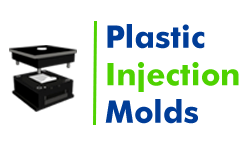- Mould Manufacturer
- Tooling
- Moulding Die
- Plastic Molding
- Plastic Injection Molding
- Injection Molding
- Nylon Injection Molding
- Injection Moulding
- Custom Injection Molding
- Injection Mould
- Injection Mouldings Process Manufacturers
- Medical Injection Molding
- Polycarbonate Injection Moulding
- Rapid Injection Moulding
- Injection Molds
- Injection Molding Cost
- Injection Molding Suppliers
- Injection Moldings
- HDPE Molding
- Metal Injection Molding
- Rubber Injection Molding
- Mold Designing
- Prototyping
- Automotive Injection Molding
- Blow Molding
- 3D Printing
Plastic Rapid Prototyping: Developing Plastic Parts
Prototyping is an essential aspect of the engineering and design process. In rapid prototyping, the technicians employ an array of techniques that are to be utilized very fast and effectively to create 3D scale models. When it comes to plastic rapid prototyping, the technique can be used to manufacture plastic parts very fast. The processes are additive manufacturing, vacuum casting CNS machined plastic parts, and rapid injection mold tooling.
Benefits of rapid plastic prototyping:
If you are not yet familiar with the benefits of rapid plastic prototyping, here is what you need to know.
- It provides the ability to assess and implement the concepts very fast and the time efficiency allow the teams to unearth more than visualizing the product, such as understanding the designs and properties of the products.
- The process aids in communication of the concepts in a manner that makes it easy to understand for all.
- The rapid prototyping plastic injection molding considers images, ideas, and concepts from two-dimensional and flat visuals to deliver products that the clients may view in real time.
- The application of repetitive deigns and incorporating changes aid in the evaluation and testing of the product, which eventually provides the guidelines for the development of the final product.
- The process is cost-effective and time-saving due to the absence of tooling and setup.
- As the same equipment can be used for the production of prototypes with different materials and properties, the cost and time can be reduced to minimum.
- The process allows testing and refinement of concepts and minimizes the design flaws.
Plastic prototyping companies: Knowledge of applications
We are one of the most reputed plastic prototyping companies dealing with different materials and technologies. Undoubtedly, rapid prototyping is a versatile technique that can be used for several applications. Here is what you need to know.
- The concept of models provides the designers with the opportunity to verify the ideas and assumptions that are present behind.
- Exploring the physical concept of the model is an ideal option of knowing it inside out and defines its existence to the stakeholders.
- The functional prototypes allow the designers and developers to create an accurate picture of the finished product.
- The technicians can check the design, manufacturing abilities, and fit of the product before sending it into the production mode.
- The prototype plastic molding is an economically-viable option and achieves a striking balance between aesthetics and functionality.
For plastic prototype service, you can connect with us and make the most of the skills of technicians offering value to your business.
Plastic prototype companies near me: get the services you need
We are one of those plastic prototype companies near me that offer several different options to create rapid prototype in plastic. Our experts can explain the details clearly. For more information, get in touch with us.
FAQ
- Q1. How To Prototype A Plastic Product?
Prototyping a plastic product involves creating a physical model to test design and functionality. There are several methods like 3D printing, for quick, low-volume prototypes, or urethane casting for more detailed small-batch prototypes. The best method depends on your specific needs and budget.
- Q2. What Is Plastic Design Method?
The plastic design method is a structural engineering technique that permits materials to deform plastically before failing, such as steel or concrete. This approach improves structural performance and safety by taking material yielding into account during the design process. It guarantees that constructions can support heavy loads without collapsing.
- Q3. What Is The Process Of Shaping Plastic?
Shaping plastic involves heating it until it becomes soft and malleable, then placing it into a mold to give it the desired shape. Once cooled, the plastic hardens and retains the shape of the mold. This process, called injection molding, is commonly used in manufacturing various plastic products.
- Q4. What Is The Principle Of Plastic Processing?
The process of processing plastic entails melting raw plastic and forming it into a variety of shapes using tools like extrusion or injection molding. The idea is to heat the plastic until it softens and can be shaped into the required shapes. Then, it should cool and harden. Numerous plastic goods can be produced using this procedure.







.webp)

